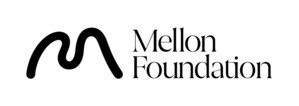NEW YORK, Jan. 28, 2019 /PRNewswire/ -- The Andrew W. Mellon Foundation, in partnership with the Association of Art Museum Directors (AAMD), the American Alliance of Museums (AAM), and Ithaka S+R announced today the results of its second comprehensive survey of the ethnic and gender diversity of the staffs of art museums across the United States. The goal of this second survey, conducted in 2018, was to help measure the change in museum staff diversity since the 2015 baseline survey.
The survey documented that among repeat participants who are AAMD members, the percentage of curators who are African-American has doubled—from 2 percent in 2015 to 4 percent in 2018—an increase of 21 positions.
Overall, the findings indicate that museum staff have become more racially and ethnically diverse since 2015. Since the last survey, 73 percent of staff hired in intellectual leadership positions were white, compared with 84 percent in 2015. Approximately 430 people of color were hired, resulting in 20 percent of museum intellectual leadership positions being held by people of color. Most of the diverse hires have been in education and curatorial departments.
In addition, the percentage of women in museum leadership positions—C-level positions such as museum director, CFO, and CEO—has increased from 57 percent in 2015 to 62 percent in 2018. Women continue to comprise some 60 percent of museum staffs and there is a preponderance of women in the curatorial, conservation, and education roles that can be a pathway toward leadership positions.
However, there has been little change since 2015 with regard to race and ethnicity in museum leadership positions. In 2018, 12 percent of these positions were held by people of color, a minimal increase from 11 percent in 2015. Earlier this month, AAM announced a multi-year, national initiative focused on diversifying museum boards and leadership, and supported by grants from the Mellon Foundation, Alice L. Walton Foundation, and Ford Foundation.
"This second demographic survey of art museums offers a snapshot of change that is overdue, slow, but also real and welcome," said Mariët Westermann, executive vice president of the Foundation. "These results show that diverse hiring is entirely possible and needed, and encourage all of us to do more to realize that potential. The Mellon Foundation looks forward to continuing to work with our many partners across the field on the great task of making American art museums representative and inclusive of the rich diversity of our country."
Mellon's groundbreaking 2015 Art Museum Staff Demographic Survey results was the first comprehensive study of staff diversity ever conducted on museums. It was undertaken to replace anecdotal evidence with hard data and to provide the museum field with the first baseline against which progress could be measured.
These survey results show that in 2015, 76 percent of staff at participating AAMD museums were held by white employees; employees of color concentrated in facilities, security, and human resources positions, revealing that many institutions in the field lack a clear path to advancement for people of color to the most influential positions.
Since that study, Mellon has invested in several initiatives to foster greater diversity within art museum staffs, including the following:
- A series of case studies investigating the inner practices of eight art museums as they work towards realizing the values of equity, diversity, and inclusion internally and with the communities they serve;
- The expansion of the Mellon Undergraduate Curatorial Fellowship, a program designed to diversify the curatorial ranks in museums across America;
- Support for 30 paid pre-professional conservation opportunities per year to prepare students from underrepresented backgrounds to pursue conservation careers; and
- A nationwide initiative to strengthen the curatorship and conservation of Native American collections, which is growing the pool of Native art museum specialists.
"We are profoundly grateful to the Mellon Foundation for supporting this and a series of studies exploring diversity in art museum staffing," said Christine Anagnos, executive director of AAMD. "It is gratifying to see that some small changes have taken place over the previous three years. Looking forward, these studies are valuable resources to continue pursuing the changes that will be necessary if U.S. art museums are to reflect, and address, the increasing diversity of the American people."
Said Laura Lott, President and CEO of the American Alliance of Museums: "Enhancing diversity, equity, accessibility, and inclusion (DEAI) in museums is a key strategic priority for the entire field. We are encouraged by this progress, but we know museum leaders can and must do more. In partnership with The Andrew W. Mellon Foundation, AAMD, and others, we will continue to sharpen our focus on equipping museum leaders with tools and resources to advance DEAI in museums, driving long-lasting, systemic culture change, and building leadership teams that more accurately reflect the communities they serve."
The Mellon Foundation commissioned the research organization Ithaka S+R to design and implement this demographic survey, with the assistance of an advisory committee of AAMD staff and member museum leaders. AAM supported the effort by enabling distribution of the survey to art museums that are not AAMD members. There was an 80 percent response rate for AAMD member organizations and a 24 percent response rate from AAM museums.
The survey was conducted by Ithaka S+R program director Roger Schonfeld and senior analyst Liam Sweeney. "The results offer museums a real opportunity to understand their own staff demographics as compared to this national snapshot," said Schonfeld. "In the coming weeks we will deliver individualized reports to the first 200 museum respondents, and we hope these findings will encourage continued action towards increasing diversity across this sector."
The Mellon Foundation intends to conduct follow-up diversity studies of the museum field at periodic intervals to help assess progress.
About the American Alliance of Museums
The American Alliance of Museums has been bringing museums together since 1906, helping to develop standards and best practices, gathering and sharing knowledge, and providing advocacy on issues of concern to the entire museum community. Representing more than 35,000 individual museum professionals and volunteers, institutions, and corporate partners serving the museum field, the Alliance stands for the broad scope of the museum community. For more information, visit www.aam-us.org.
About The Association of Art Museum Directors
The Association of Art Museum Directors—representing 242 art museum directors in the U.S., Canada, and Mexico—promotes the vital role of art museums throughout North America and advances the profession by cultivating leadership and communicating standards of excellence in museum practice. Further information about AAMD's professional practice guidelines and position papers is available at www.aamd.org.
About Ithaka S+R
Ithaka S+R helps academic and cultural communities serve the public good and navigate economic, technological, and demographic change. Our work also aims to broaden access to higher education by reducing costs and improving student outcomes. Ithaka S+R is part of ITHAKA, a not-for-profit organization helping the academic community use digital technologies to preserve the scholarly record and to advance research and teaching in sustainable ways.
About The Andrew W. Mellon Foundation
Founded in 1969, The Andrew W. Mellon Foundation endeavors to strengthen, promote, and, where necessary, defend the contributions of the humanities and the arts to human flourishing and to the well-being of diverse and democratic societies by supporting exemplary institutions of higher education and culture as they renew and provide access to an invaluable heritage of ambitious, path-breaking work.
SOURCE The Andrew W. Mellon Foundation
Related Links
WANT YOUR COMPANY'S NEWS FEATURED ON PRNEWSWIRE.COM?
Newsrooms &
Influencers
Digital Media
Outlets
Journalists
Opted In





Share this article